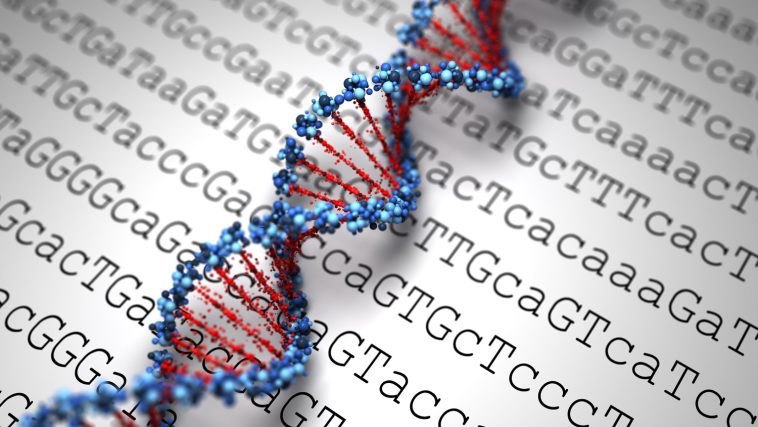[Originally published in 2015 as CRISPR Challenges the Tenets of Evolution Theory]
Microbes, once thought to be life’s simplest forms, are now known to use complex synchronized genetic processing as a defensive system against foreign invading micro-organisms. As a previously unknown and unrecognized genetic mechanism, CRISPR challenges the tenets of evolution.
This microbe defense process, now known as CRISPR, further undermines natural selection’s fundamental tenet of early life spontaneously emerging from simple processes. In The Origin of Species, Charles Darwin envisioned life starting “from so simple beginning endless forms most beautiful and most wonderful.” CRISPR presents a new challenge to current theories of evolution, including Darwinism, neo-Darwinism, and the Modern Synthesis theory of evolution.
First Detected
Evidence for CRISPR was first detected in the bacterium Escherichia coli by a Japanese team headed by Yoshizumi Ishino of Kyushu University while investigating the IAP gene in 1987. The first clue discovered were regularly spaced repeated sequences in the genome. At the time, the biological purpose of these types of sequences remained a mystery.
“These scientists who discovered CRISPR had no way of knowing that they had discovered something so revolutionary,” Carl Zimmer noted in the article “Breakthrough DNA editor borne of bacteria,” published in Quanta Magazine. “They didn’t even understand what they had found.”
Next Clue
The next clue to solve the CRISPR mystery was not published until more than ten years later in the journal of Molecular Biology by Francisco Mojica of Universidad de Alicante, Spain, in a letter entitled “Biological significance of a family of regularly spaced repeats in the genomes of archaea, bacteria, and mitochondria.”
Mojica discovered “the occurrence of similar… repeated short elements… regularly spaced by unique intervening sequences of constant length” as had Ishino – but in all 21 archaea and bacterial species studied. Mojica, while referring to these sequences as Short Regularly Spaced Repeats (SRSRs), was stunned by the new mystery: “biological significance of this peculiar family of repeats arises as an item to be elucidated.”
These mystery sequences in 2002 were dubbed CRISPR by Ruud Jansen of Utrecht University, The Netherlands. Jansen’s evidence confirmed Ishino and Mojoic’s previous findings. These repetitive sequences bookend both sides of non-repetitive sequences.
CRISPR is an acronym for Clustered Regulatory Interspaced Short Palindromic Repeats. Palindromic means that the sequences are identical when reading either backward or forwards. “A man, a plan, a canal: Panama” and “race car” are examples of palindromic sequences.
What Do They Do?
A few years later, three teams of scientists independently noticed something intriguing about these CRISPR non-repetitive sequence spacers — they were a lot like the DNA of viruses. But what do they do?
“And then the whole thing clicked,” said Eugene Koonin, an evolutionary biologist at the National Center for Biotechnology Information in Bethesda, Maryland. CRISPR, Koonin proposed, is an immune defense mechanism.
Shortly after Koonin posted his hypothesis, Mojoic’s group, along with two French groups, independently confirmed that the CRISPR spaces are bits of virus DNA acting as a weapon against viral invasions.
In the yogurt business, since outbreaks of bacteria-killing viruses destroys the fermentation process, the hypothesis that CRISPR could provide an anti-viral defense system was intriguing enough for microbiologist Rodolphe Barrangou to test it. If the CRISPR hypothesis were true, it would revolutionize yogurt manufacturing.
With Streptococcus thermophilus and two strains of viruses, Barrangou’s team was the first to test Koonin’s hypothesis. The team found that resistant colonies contained DNA fragments from the two viruses in their CRISPR sequence spacers―just as Koonin had hypothesized.
Published in the journal Science in 2007 entitled “CRISPR provides acquired resistance against viruses in prokaryotes [bacteria],” Barrangou’s team concluded that “CRISPR, together with associated Cas genes, provided resistance against phages, and resistance specificity is determined by spacer-phage sequence similarity.”
When the viral DNA was cut out from the bacterial DNA spacers, the bacteria lost their resistance against invading viruses. The experiment validated the role of viral DNA in granting bacterial immunity against viruses.
Then, “CRISPR burst onto the scene and swept through laboratories faster than you can say ‘adaptive immunity,’” noted science writer Kerry Grens in the article “There’s CRISPR in your yogurt,” published in The Scientist.
In the 2015 Quanta Magazine interview with Carl Zimmer, “if you’ve eaten yogurt or cheese [today], chances are you’ve eaten CRISPR-ized cells” Barrangou said.
CRISPR undermines the evolutionary presumption that bacteria are simple. Contrary to the once primitive life notion, microorganisms demonstrate an inexplicably complex defensive mechanism.
More perplexing is how CRISPR could have evolved through any series of random chances.
Symphony
As CRISPR started giving up its secrets, Jennifer Doudna, Professor of Chemistry at the University of California, Berkeley, turned to focus on the Cas enzyme puzzle. Not for any practical value, only because she was intrigued by chemistry. “You are not trying to get to a particular goal,” she explained to Zimmer, “except understanding.”
Cas (CRISPR-associated) enzymes are proteins. While Jansen knew Cas could slice DNA, since DNA cannot slice itself, no one knew how or why Cas enzymes (protein) were associated with CRISPR spacer sequences (nucleic acids). Watch the molecular symphony video:
Scientists discovered a complex integrated protein-nucleic acid molecular defense system that works like a symphony. When a new virus invades a microbe, Cas grabs a little of the virus’s genetic material, cuts open its DNA, and inserts the piece of virus DNA into the CRISPR spacer region.
The complexity of the process is amazing. The microbe then uses the new viral DNA to turn Cas enzymes into more precision-guided weapons. After copying the CRISPR viral spacer material into an RNA molecule, these new CRISPR RNAs are picked up by Cas enzymes, and together they launch a viral DNA search and destroy mission. Cas enzymes then cut the viral DNA to prevent further viral replication.
“Once we understood it [Cas] as a programmable DNA-cutting enzyme, there was an interesting transition,” Doudna said. She and her colleagues realized there might be a very practical use for CRISPR. Doudna recalls thinking, “Oh my…, this could be a tool.”
“As important as these results were, microbiologists were also grappling with even more profound implications of CRISPR,” Zimmer notes. “It showed them that microbes had capabilities no one had imagined before.”
Species Specificity
Jansen’s discovery poses a new challenge to the tenets of evolution theory: species specificity. As Jansen points out, “The direct repeats and the leader sequences were conserved within a species, but dissimilar between species.” CRISPRs are species specific with no known transitional links. Each species possesses specific novel molecular sequences without any known common ancestor.
To Zimmer’s simple question, “how did these microbes develop these abilities,” an answer compatible with the theory of evolution has yet to be developed, intensifying the Darwin Dilemma. CRISPR challenges the tenets of natural selection.
While Darwin’s phrase “from so simple beginning” should be included in history textbooks, after 150 years of unprecedented scientific inquiry, the phrase has no place in science textbooks.
Genesis
Scientific evidence continues to support patterns in nature compatible with the Genesis account of creation — not a continuum of biological evolution from simplest to complex forms.







